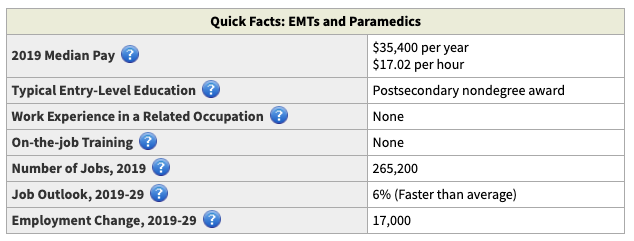The Beginner’s Guide to Becoming a Paramedic
What is a paramedic, what do they do, and how do you become one?
If you’re exploring a career in healthcare with an interest in this particular field, these are questions that you should be asking yourself before you commit to training as a paramedic. For whatever reason you’re drawn to this profession, bear in mind that learning the skills to become a great paramedic requires commitment and dedication. Nevertheless, the rewards are immense—with the ability to make a real difference in people’s lives.
If you’re on the fence as to whether a paramedic career is right for you, keep reading. Our beginner’s guide to becoming a paramedic will help you make an informed decision about your potential career in this field.
1. Understanding the Nature of Paramedic Work
Paramedics are first responders in medical emergencies. They are often the first to arrive on the scene of an accident or any situation where someone is sick or hurt. They are tasked to evaluate the severity of a person’s injuries or condition and are required to make quick decisions that often spell the difference between life or death. They are also in charge of administering immediate medical care and safely transporting the individual to an emergency room if necessary.
Given this, a paramedic’s ability to think on their feet and their competence under pressure are critical to ensuring a positive outcome for these emergency scenarios. Paramedics mostly work in ambulances responding to emergency calls and transporting patients to hospitals.
2. Completing Paramedic Training
Paramedics are required to complete a postsecondary degree program and earn nationally recognized qualifications through an exam, as well as earn a license to practice.
A paramedic diploma program will usually consist of 45 credits that span across three semesters and includes 240 hours of ride time and 160 hours of hospital time. Training and education for the paramedic program will involve a lot of classroom instruction to learn the roles and responsibilities of the job, familiarize yourself with important medical and legal issues, the basics of illness and injury prevention, learning medical terminologies, and understanding the ethics behind the tasks. These are all on top of learning essential life-saving skills needed on the job such as patient assessment, air-way management, venous access, administering medication, management of shock, general pharmacology, and therapeutic communications.
In the second semester, aspiring paramedics go into more in-depth training and education on subjects such as cardiology, neurology, obstetrics, toxicology, and other medical fields that are often encountered in emergencies. There’s also a focus on trauma emergencies such as burns, spinal injuries, and musculoskeletal trauma, just to name a few.
In the third semester, training will focus on both theory and procedures and will cover subject matter such as neonatology, geriatrics, pediatrics, abuse and assault, assessment-based management, ambulance operations, medical incident command, rescue operations and awareness, handling hazardous materials, and crime scene awareness.
Once aspiring paramedics complete their education, this qualifies them to take the National Registry of Emergency Medical Technicians (NREMT) exam and apply for a license to practice. Keep in mind that while every state will require paramedics to be licensed, requirements will usually vary depending on state regulations.
3. Employment Opportunities
All areas of healthcare are thriving right now. Moreover, according to the Bureau of Labor Statistics (BLS), job growth for paramedics is higher compared to other professions. This means that the demand for skilled and trained paramedics is also poised to grow. The aging population will put more emphasis on health services, with medical workers across different fields continuing to be in demand. To that end, aspiring paramedics who have great training under their belt and meet all the requirements will have less difficultly finding a job.

In terms of employment options, paramedics also have the opportunity to explore jobs across other industries—not just healthcare. For example, private company medics can work in construction, sports, events, or aviation. The point is, paramedics are not limited to working solely in hospitals.
4. Earning Potential
Paramedics earn a median salary of $35,400 annually, which was around $17 per hour in 2019. Other reports show that the best-paid paramedics made $44,640 in the same year, while paramedics on the lower end of that spectrum earned $27,300.
If you think you have what it takes to become a paramedic, know that you’ll be going into a career that gives you the satisfaction of helping people in life-changing ways. It’s a career in which you can make a real and positive impact on people’s lives while earning a stable income. Training to be a paramedic is rigorous, but you have the option to finish your studies in less time than traditional four-year degrees. A career in this field also offers a lot of job stability, especially with healthcare set to continue booming in the years to come.
Having the right training and education can definitely give you great leverage in choosing the right job at the right place as you start your paramedic career. If you want to learn more, check out our paramedic program at HCI.














